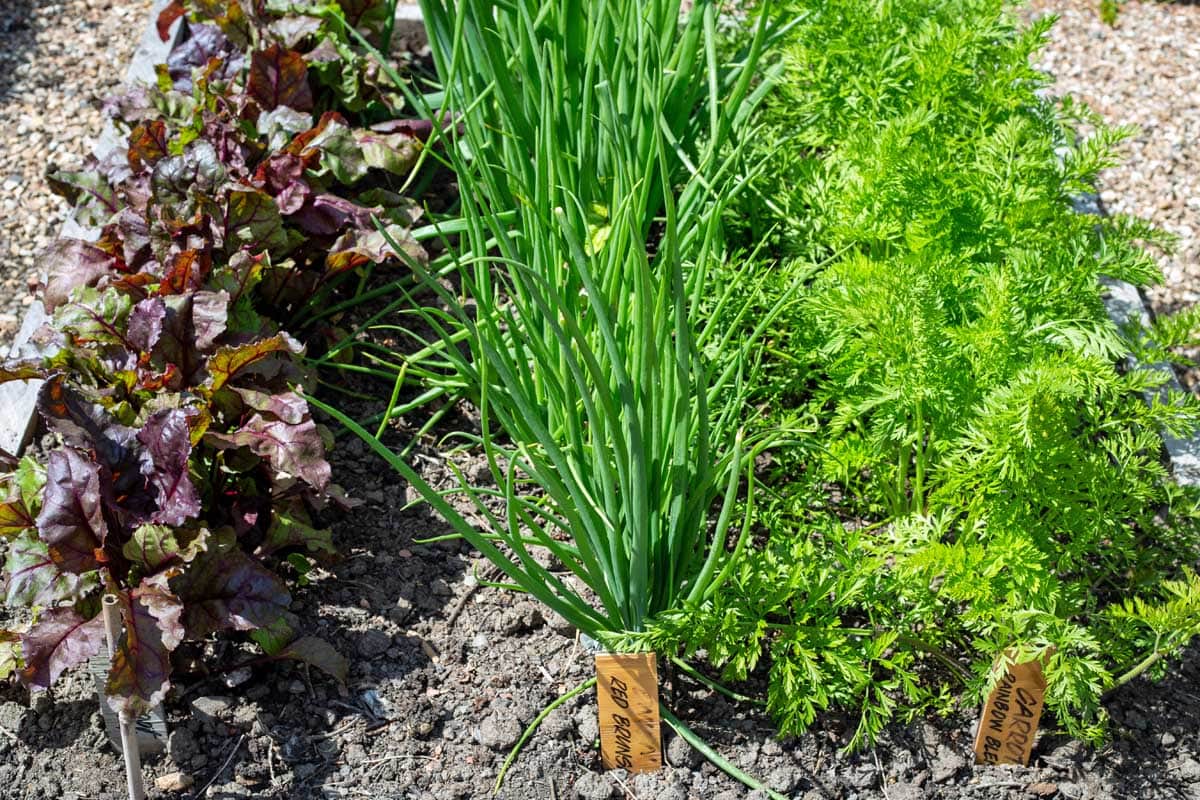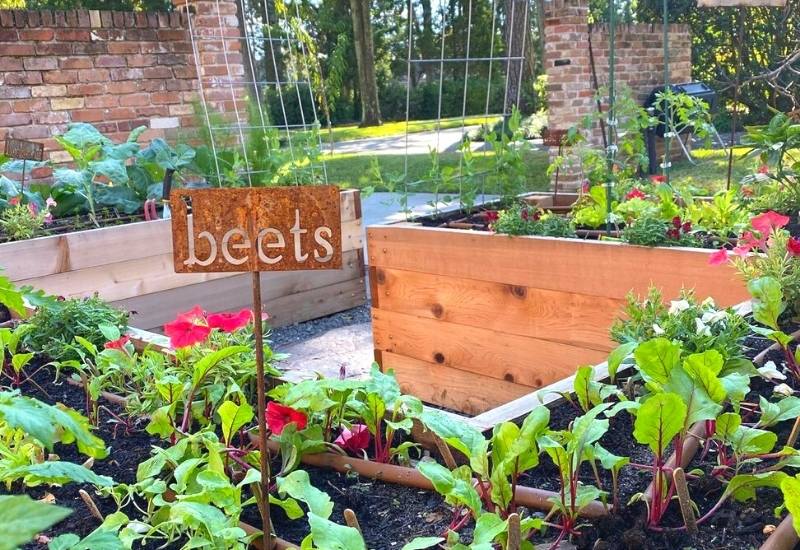Beet Companion Plants That Will
Beet Companion Plants That Will Benefit Your Garden
Beetroot is a delicious and nutritious root vegetable that is easy to grow. It is also a great companion plant, meaning that it can be grown alongside other vegetables to benefit both plants.
In this blog post, we will discuss some of the best companion plants for beetroot. We will also talk about how companion planting can benefit your garden and how to choose the right companion plants for your needs.
What is Companion Planting?
Companion planting is a gardening technique that involves planting certain types of plants together to benefit each other. Companion plants can help to deter pests, improve soil quality, and attract beneficial insects.
There are many different types of companion plants, and each one has its own unique benefits. Some common companion plants for beetroot include:
- Alliums: Alliums, such as onions, garlic, and chives, can help to deter pests such as aphids, slugs, and beetles. They can also improve soil quality by adding nitrogen.
- Brassicas: Brassicas, such as broccoli, cabbage, and cauliflower, can help to repel pests and diseases. They can also provide shade for beetroot plants, which can help to prevent them from bolting.
- Legumes: Legumes, such as beans and peas, can help to fix nitrogen in the soil. This can benefit beetroot plants, as nitrogen is an important nutrient for plant growth.
- Herbs: Herbs, such as mint, thyme, and dill, can help to deter pests and attract beneficial insects. They can also add flavor to beetroot dishes.
How to Choose Companion Plants for Beetroot
When choosing companion plants for beetroot, it is important to consider the following factors:
- Pests and diseases: Some companion plants can help to deter pests and diseases that are common to beetroot. For example, alliums can help to repel aphids, while brassicas can help to repel pests and diseases.
- Soil quality: Some companion plants can help to improve soil quality. For example, legumes can fix nitrogen in the soil, while herbs can help to add organic matter.
- Sunlight: Beetroot plants need full sun to grow well. However, some companion plants, such as brassicas, can provide shade for beetroot plants, which can help to prevent them from bolting.
- Water requirements: Beetroot plants need regular watering, but they do not like wet feet. Some companion plants, such as legumes, can help to retain moisture in the soil.
Benefits of Companion Planting
There are many benefits to companion planting, including:
- Reduced pest and disease problems: Companion plants can help to deter pests and diseases, which can save you time and money on pest control.
- Improved soil quality: Companion plants can help to improve soil quality by adding nutrients, organic matter, and beneficial microorganisms.
- Increased yields: Companion planting can help to increase yields of beetroot and other vegetables.
- Attraction of beneficial insects: Companion plants can attract beneficial insects, such as ladybugs and lacewings, which can help to control pests.
- Improved appearance of the garden: Companion planting can help to create a more attractive and visually appealing garden.
Conclusion
Companion planting is a great way to improve the health and productivity of your garden. By planting beetroot alongside the right companion plants, you can help to deter pests, improve soil quality, and increase yields.
If you are new to companion planting, start by choosing a few of the companion plants listed above. Plant them alongside your beetroot plants and see how they do. You may be surprised at how much of a difference they make!
FAQ of companion plants to beets
What are companion plants to beets?
Beet companion plants are plants that can be grown in close proximity to beets to benefit each other. Some of the best companion plants for beets include:
- Alliums: Alliums, such as onions, garlic, and chives, can help to repel pests that damage beets, such as aphids and flea beetles.
- Brassicas: Brassicas, such as broccoli, cabbage, and kale, can help to improve the taste and quality of beets.
- Legumes: Legumes, such as beans and peas, can help to improve the nitrogen content of the soil, which can benefit beets.
- Lettuce: Lettuce can help to shade the soil around beets, which can help to prevent weeds from growing and help to retain moisture in the soil.
- Marigolds: Marigolds can help to repel pests that damage beets, such as aphids and nematodes.
What are some plants that should not be planted near beets?
Some plants that should not be planted near beets include:
- Carrots: Carrots and beets are both members of the Apiaceae family, and planting them too close together can lead to cross-pollination, which can result in carrots with poor flavor and beets with misshapen roots.
- Pole beans: Pole beans can shade beet plants, which can stunt their growth.
- Spinach: Spinach and beets compete for the same nutrients in the soil, so planting them too close together can lead to nutrient deficiencies in both plants.
- Tomatoes: Tomatoes and beets can attract the same pests, so planting them too close together can make it more difficult to control pests.
- Turnips: Turnips and beets are both root vegetables, and planting them too close together can lead to root rot.
What are the benefits of companion planting with beets?
There are several benefits to companion planting with beets. Companion plants can help to:
- Attract beneficial insects: Some companion plants, such as marigolds and nasturtiums, can attract beneficial insects, such as ladybugs and parasitic wasps, which can help to control pests that damage beets.
- Relieve stress: Some companion plants, such as chamomile and lavender, can help to relieve stress in beet plants, which can lead to healthier plants.
- Improve soil quality: Some companion plants, such as legumes, can help to improve the nitrogen content of the soil, which can benefit beets.
- Discourage pests: Some companion plants, such as onions and garlic, can help to deter pests that damage beets.
- Enhance flavor: Some companion plants, such as cabbage and broccoli, can help to enhance the flavor of beets.
How far apart should beets be planted?
Beet plants should be spaced about 2-3 inches apart. This will give them enough room to grow and develop their roots.
Image of companion plants to beets
5 different images of companion plants to beets from Pinterest:
- Carrots. Carrots and beets are both root vegetables that grow well together. They have different nutrient requirements, so they won't compete for nutrients. Carrots also help to repel pests that can harm beets.

- Cabbage. Cabbage is another member of the Brassica family that is a good companion plant for beets. They help to deter pests and diseases, and they also help to improve the soil quality.

- Lettuce. Lettuce is a cool-season crop that grows well in the same conditions as beets. It also helps to suppress weeds and improve the soil quality.

- Onions. Onions are another good companion plant for beets. They help to repel pests and diseases, and they also help to improve the flavor of the beets.
- Radishes. Radishes are a fast-growing crop that can be planted alongside beets. They help to loosen the soil and improve drainage, which can benefit the beets.

Post a Comment for " Beet Companion Plants That Will"